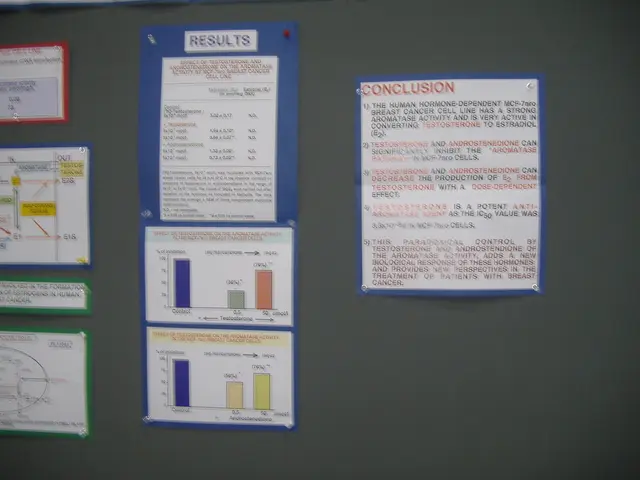Procedure Details and Consequences, Results, and Future Prospects: Stereotactic Mammotomy
In the realm of breast cancer diagnostics, a stereotactic breast biopsy plays a crucial role. This minimally invasive procedure is used to collect tissue samples from suspicious areas within the breast, providing valuable information for a definitive diagnosis.
The process begins with breast compression, a step similar to a mammogram, which helps immobilize the breast and allows for precise targeting of the area of concern. Following this, imaging localization is performed, typically using mammographic imaging, to accurately locate the area from which the biopsy samples will be taken.
Before the procedure, the breast tissue is numbed with a local anesthetic to minimize discomfort. A needle, either a core needle or a vacuum-assisted device (VAD), is then carefully inserted into the breast, targeting the lesion of interest to retrieve tissue samples. Multiple samples may be obtained to ensure adequate tissue for diagnosis.
During the procedure, the doctor may take further images to verify correct needle placement and sample collection. After the tissue has been collected, the breast is usually bandaged, and instructions for care and any potential side effects are given.
Radiologists use specialized mammography machines to help pinpoint any suspicious areas in the breast. These machines guide the radiologist as they remove tissue samples, ensuring accuracy and sensitivity in determining whether or not a suspicious area in the breast is cancerous.
Mammography equipment uses X-rays to examine the breast, with the machine holding, compressing, and moving the breast into different positions to take images from different angles. For stereotactic breast biopsies, a special kind of mammogram machine is used, which helps radiologists make sure they get the needle in the right place before taking samples.
Healthcare professionals carry out most stereotactic breast biopsies on an outpatient basis, with individuals remaining awake throughout the procedure, which usually takes no more than 1 hour. On the day of the procedure, healthcare experts recommend wearing comfortable clothing, not using deodorant, talcum powder, perfume, or body lotion around the armpits or breasts, leaving any jewelry at home, removing any dental appliances, glasses, and anything else metal that could interfere with the X-rays before the test.
It is essential to inform the doctor if you may be pregnant and if you are taking any supplements and medications before having a stereotactic breast biopsy. After the procedure, the person may experience bruising, swelling, or soreness, but these symptoms can be managed with ice and over-the-counter pain relievers.
If the biopsy finds breast cancer cells, it will also show the type and subtype of breast cancer. The results are then examined by a specially trained doctor called a pathologist, who determines whether or not cancerous or precancerous cells are present.
The outlook for early stage breast cancer is generally positive, with nearly 100% of people with stage 1 breast cancer living for at least another 5 years. This underscores the importance of early detection and accurate diagnostics, such as the stereotactic breast biopsy, in the fight against breast cancer.
- Stereotactic breast biopsy, which plays a vital role in breast cancer diagnostics, utilizes imaging localization, often through mammographic imaging, to accurately identify suspicious areas within the breast.
- Before the procedure, the breast tissue is numbed with a local anesthetic to minimize discomfort, and radiologists use specialized mammography machines to help pinpoint these areas.
- The collected tissue samples are then examined by a pathologist to determine whether cancerous or precancerous cells are present, leading to crucial information for women's health and overall health-and-wellness.
- While potential side effects like bruising, swelling, and soreness may occur after the stereotactic breast biopsy, these symptoms can be managed with ice and over-the-counter pain relievers.
- Early detection through diagnostic procedures like the stereotactic breast biopsy significantly impacts the outlook for breast cancer, with nearly 100% of people with stage 1 breast cancer living for at least another 5 years, underscoring the importance of mental health and maintaining regular check-ups for women's health and medical-conditions like breast cancer.




